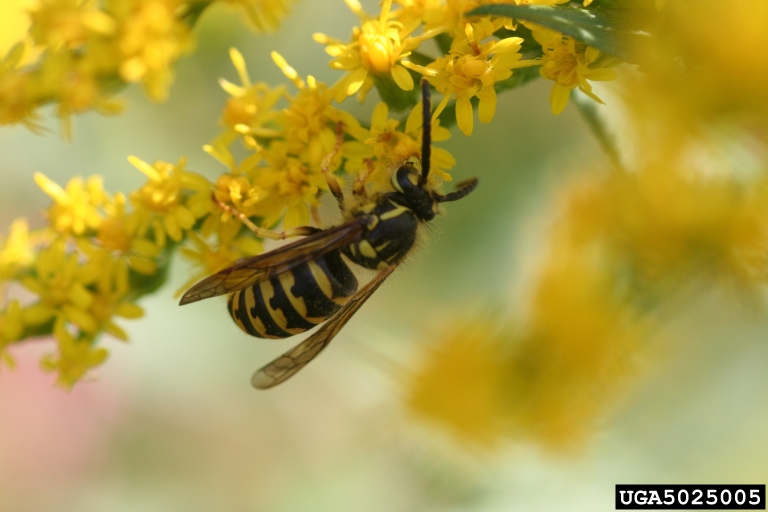It is late summer and many of us enjoy being outdoors in the landscape and taking early morning walks before the temperature rises for the day. There are precautions to take while being outdoors and the activities as many insects are very active, including the yellow jacket. Late summer and many of us being outdoor brings us increases the change of being stung by this insect. The Yellow Jacket sting can be painful and potential dangerous to certain individuals with strong reactions to stings.

In the State of Florida there are two species of this Yellow Jacket Wasp, the Eastern Yellow Jacket and the Southern Yellow Jacket. It is difficult to distinguish between them and for this article I will refer to them as Yellow Jackets. Yellow Jackets most often colonize in the ground and are often found in lawns that tend to stay dry, landscape beds and edge of woodlands. Colonies of this flying insect can grow into hundreds or even larger numbers. Often by observation in morning or evening light the entry and exit point of the nest can be see with some luck. It looks like an extremely busy airport with lots of landings and departures. The unfortunate way to find the nest can occur by mowing the lawn disturbing the nest with many yellow jackets emerging from the nest to protect it. The colony quickly goes into defense mode with vibrations occurring nearby. This has occurred with me on more than one occasion. All modesty can be lost while run away from the nesting area with several yellow jackets stinging you move quickly move away. Clothing has been known to be shed to hopefully remove the yellow jackets busily stinging either under or on the outside of clothing.

During the early part of the spring and summer season yellow jackets are busy foraging for protein sources to feed to queen and young larvae. During the consuming of the insects, with many of those harvested being harmful insects to plants. The yellow jackets derive their sugar sources from the larvae secretions as they consume the proteins provided. This is part of the reason we do not often see Yellow Jackets in late spring and early summer. As the queen begins to reduce the amount of egg laying, hence the less numbers of larvae to feed and harvest the sugar for a wasp population at its peak creates a more aggressive need to find alternate sources of sugar. This is part of the reason why yellow jackets show up in greater numbers at outdoor sporting events and other places to look for additional sugar sources. Sugar water for hummingbirds is another backyard site for yellow jackets to work hard for the sugar. Even the birds are careful about approaching the feeders.
I do not advocate the destruction of yellow jacket nesting sites unless they are in proximity to human activity as this can set the situation of stings and potential health challenges for people. If you identify a nest location do not approach and call a company that specializes in addressing these types of stinging insects. Keep in mind that this insect provides a benefit in harvest of many harmful pests to plants yet do pose a potential threat. Be observant as you garden situations that seemed fine last month may have changed quickly.
- Deer Damage in the Landscape - February 22, 2024
- Gardeners: A Critical Link to Protecting Our Water - January 18, 2024
- Propagating Plants by Leaf and Cane - December 14, 2023
